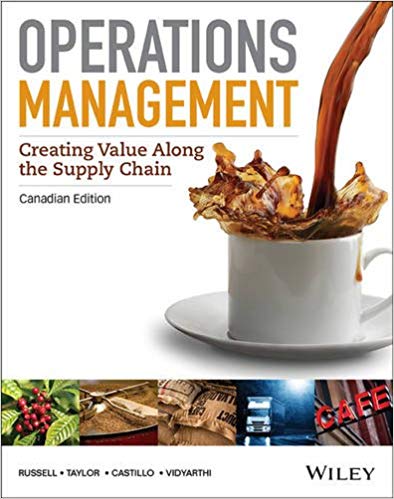Question
comments about these post? 1. The bullwhip effect is a word used to explain a situation in supply chain management where minor consumer demand changes
comments about these post?
1. The bullwhip effect is a word used to explain a situation in supply chain management where minor consumer demand changes can cause intense fluctuations in demand throughout the entire supply chain. This sudden ripple effect leads to increased variability in demand as we move away from the end customer and closer to the manufacturer or supplier. Two of the most common factors that can be attributed to a bullwhip effect are Lack of communication throughout the supply chain, as well as order batching. Order batching is when retailers make larger orders rather than placing smaller and more frequent orders. This can result in fluctuations and inconsistency in demand, for suppliers creating spikes in the process of production as well as causing a spike in the supply chain for the companies that provide the raw materials. As for the other reason, Lack of communication and information sharing between partners in the supply chain can lead to misunderstandings and inaccurate predictions of demand.2 scenarios that could cause bullwhip are seasonal demand and special promotional sales in which items become abnormally fast movers. To consider a situation where the retailer faces a rise in customer demand for a product due to seasonal variations or a sudden spike. As a result, to meet the increase, the retailer may have to order additional units from their distributor. If sustained demand is accepted or communicated the distributor may increase their order from the manufacturer, but if the anticipated demand halts The bullwhip effect can be caused by this. Scenario 2 is when consumers can take advantage of discounts or special offers and stock up on that particular product. Consequently, suppliers might overestimate the level of demand. End up with inventory once the promotion concludes. The main preventative measure than can always be taken to prevent the bullwhip is fluid communication up and down the supply chain with proper planning from top to bottom of the supply chain.
2. The bullwhip effect describes the distortions in a supply chain caused by changes in customer demand, resulting in large swings in inventory levels as the orders ripple upstream from the retailer to the distributor and manufacturer (Wallace, 2021). All those involved in the supply chain must place emphasis on forecasting to have adequate inventory. When customer demand rises for instance, the retailer may over order from the distributor. If the distributor also has poor forecasting ability, they may over order themselves from the manufacturer. This could compound all the way up to the manufacturing level and result in exponentially inaccurate projection. The Covid-19 pandemic created many real world examples of the bullwhip effect. Toilet paper, which became of high buying priority for a brief time during the pandemic, was over ordered by stores and overproduced by manufacturers as the rise in demand was extremely short lived. A similar story played out in the household medical supply and cleaning supply chains. According to the article "Bullwhip Effect: Example, Causes, and Impact on Supply Chain, major contributing factors to the bullwhip effect are poor communication, incorrect forecasts, and lead time issues. Consumers demanded a growing supply of these products for months until it fell off dramatically. According to Mike Hockett of Food Manufacturing, in April, by the time manufacturing was set up to meet the previously enormous demand, everyone was stocked up and demand fell to pre-pandemic levels. The supply chain can react unreasonably the same way consumers do. The Covid-19 pandemic was unprecedented and created a situation where forecasting was nearly impossible. All members of the supply chain must fight the constant battle to manage ordering and accurately project the future. While this is a daunting task, modern technology allows for much more accurate projecting than ever. At all levels of the supply chain, the challenge is to project the demand of tomorrow. Attempting to supply the demand of yesterday is when the bullwhip effect takes hold.
Step by Step Solution
There are 3 Steps involved in it
Step: 1
Both posts provide a comprehensive explanation of the bullwhip effect in supply chain management and ...
Get Instant Access to Expert-Tailored Solutions
See step-by-step solutions with expert insights and AI powered tools for academic success
Step: 2

Step: 3

Ace Your Homework with AI
Get the answers you need in no time with our AI-driven, step-by-step assistance
Get Started


